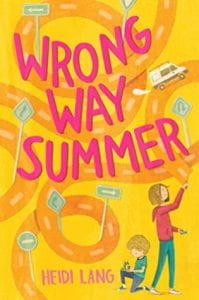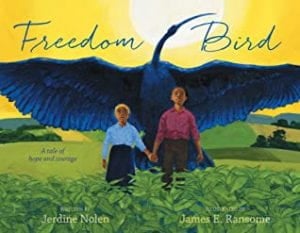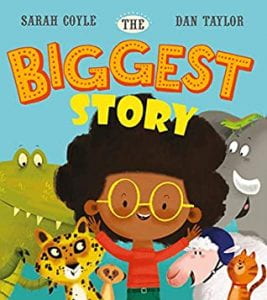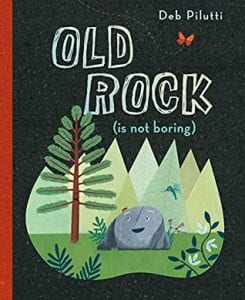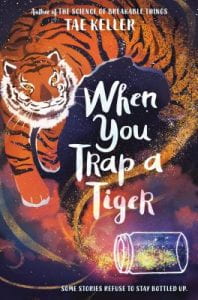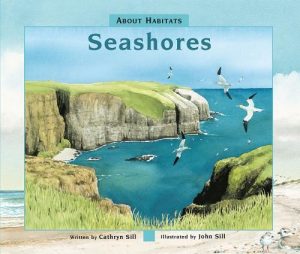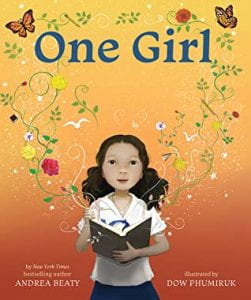 Beatty, Andrea. One Girl. Abrams, 2020. $16.99. 32 p. 978-1-419-71905-9. Grades K-3.
Beatty, Andrea. One Girl. Abrams, 2020. $16.99. 32 p. 978-1-419-71905-9. Grades K-3.
One dejected looking little girl sits all alone on the steps of a remote porch underneath a starry sky when a glowing book falls to her feet like a comet. Immediately upon opening it, her world changes into a brightly colored fantasyland where books grow on trees and pencils sprout from the earth. As the young girl travels through this wondrous land, she witnesses diverse women working independently as artists, scientists, and leaders. The next morning she races to school to share her treasure with an eager and diverse group of students. Shortly after, she picks up a pencil and begins writing while astonished classmates watch the magic spill from her hand. Next, boys and girls alike follow her lead and begin to read, write, and share their unique stories while elements of their stories: a tiger, a grand piano, a helicopter, and hot air balloons float overhead. Later, by the light of the moon another girl sits on the front steps and watches as several new glowing books fall from the sky. Lovely, repetitive prose “One girl glowing/shares her song” reinforces the beauty of a young girl finding her voice yet also allows the reader to be fully immersed in the opportunities she has opened with her love of books. The young girl protagonist along with her supportive teacher present as Asian with medium-beige skin and beautiful dark hair. Classmates all wear the same school uniform but represent a variety of ethnicities among skin and hair colors.
THOUGHTS: One Girl is a loving tribute to the power of reading, writing, and storytelling. In addition to being a lovely read aloud, this title would make a great introduction to a writing unit or a classroom conversation about how words and actions can affect others. Short and repetitive text surrounded by stunning art with some graphic elements make this a nice option for sharing with pre-readers or English language learners who may need a little nudge to find their reading groove. This book has a place in any school library collection, classroom libraries, and beyond.
Picture Book Jackie Fulton, Mt. Lebanon SD

